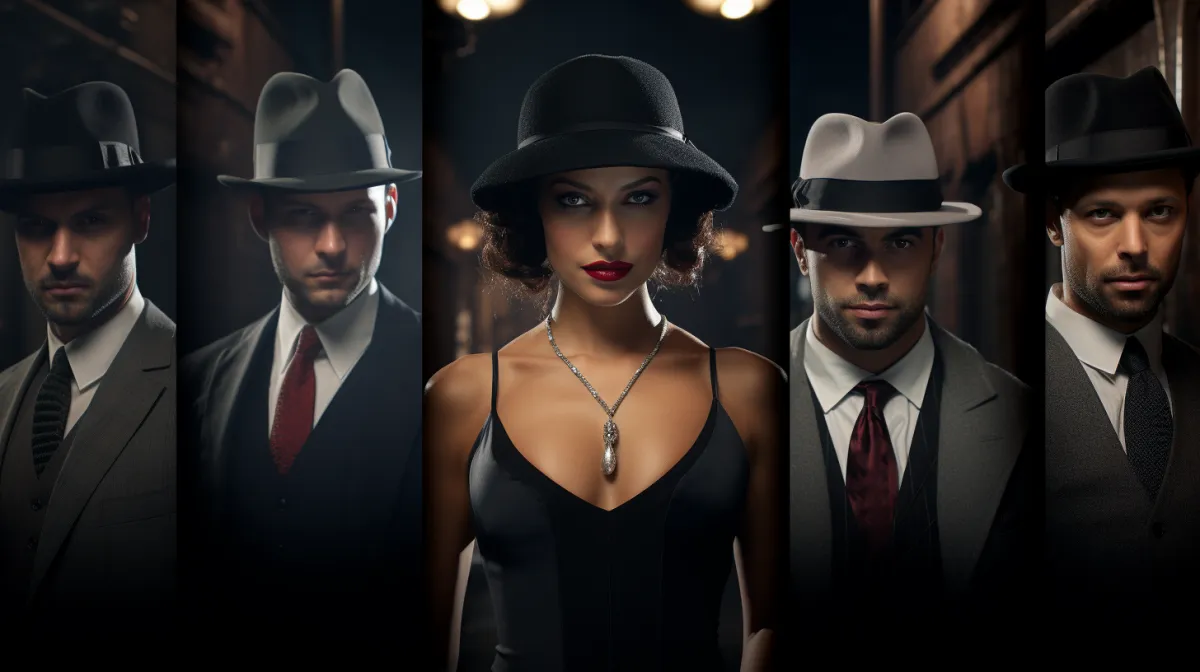CAPSTONE CONVERSATIONS
Capstone Conversations explores the world of hats with a keen focus on style, history, and craftsmanship. Guided by the expertise of Keith Christmas, this blog delves into the fascinating world of millinery, from the iconic fedora to contemporary caps. Our content is rich with historical anecdotes, fashion-forward trends, and practical styling advice, making it an essential read for hat enthusiasts and style connoisseurs alike. Join us at Capstone Conversations for a journey through the art and soul of hats, where tradition meets modern flair."

The Fedora Unveiled: From Stage to Style Icon
Introduction
A mere mention of the fedora hat conjures images of timeless elegance and iconic style. Originally popularized on the Parisian stage, the fedora has traversed a remarkable journey, evolving from a fashion statement of the theatrical world to a staple in the wardrobes of the style-conscious. This blog post delves into the fascinating history of the fedora hat, exploring its origins, cultural significance, and enduring appeal.
The Birth of the Fedora
The story of the fedora begins in 1882, on the stage of Paris’s Théâtre du Vaudeville during Victorien Sardou’s play "Fédora". Actress Sarah Bernhardt, in her role as Princess Fédora Romanoff, donned a creased felt hat that would later bear the name of her character. This hat, with its distinctive soft brim and center crease, was not just a fashion accessory but a symbol of the burgeoning women's movement, challenging traditional gender norms of the time.
Rise to Prominence Among Upper-Class Men
Initially embraced as a women's hat, the fedora underwent a gender transition and by the early 1890s, became a favored headpiece among upper-class men in England and continental Europe. Its rise to prominence was marked by its ability to outshine the previously popular Homburg hat. The fedora’s appeal lay in its blend of style and practicality, providing a sophisticated yet functional accessory for the discerning gentleman.
Design Evolution and Material Diversity
The fedora is distinguished by its soft brim and indented crown, often featuring a lengthwise crease and a “pinch” near the front. Over the years, the fedora evolved, introducing variations like teardrop and diamond crowns, and experimenting with a range of materials from wool and rabbit felt to more exotic fabrics like vicuña. This diversity in design and material added an element of luxury and versatility, making the fedora a multifaceted accessory suited for different occasions and styles.
Golden Era in the 1920s and Hollywood Influence
The 1920s marked the fedora’s golden era, aligning it with the Prohibition era’s gangster chic. This period solidified the fedora’s association with a blend of mystery and elegance. The 1940s and 1950s saw the fedora become a fixture in Hollywood noir, with actors like Humphrey Bogart and Cary Grant elevating its status on the silver screen. The fedora’s depiction in these films underscored its connection with the ideals of manliness and mystery.
Cultural Icons and the Fedora in the 1960s and Beyond
The fedora continued to be a symbol of style and status beyond the mid-20th century. Figures like college football coach Paul Bear Bryant and Tom Landry, head coach of the Dallas Cowboys, incorporated the fedora into their iconic images. The 1970s brought a revival of the fedora in popular culture, thanks in part to the Indiana Jones films. Musicians like Michael Jackson in the 1980s and later, Justin Timberlake and Britney Spears, kept the fedora in the public eye, signaling its adaptability and timeless appeal.
Conclusion
From its dramatic origins on the Parisian stage to its status as a symbol of sophistication and style, the fedora hat has remained a constant in the ever-changing world of fashion. Its ability to adapt to different eras and styles, while maintaining its distinctive charm, speaks to the enduring allure of the fedora. As we look back on its storied history, it's clear that the fedora is not just a hat, but a testament to the evolution of fashion and the timeless nature of true style.
References
Alexander Hats
Crafting Elegance in Headwear: Over 20 Years of Excellence in Quality Hats and Caps.
WE SHIP NATIONWIDE
(704) 215-6553
Store Hours
MONDAY - SATURDAY
11:00 AM - 7:00 PM EST
CLOSED SUNDAY
LOCATION
EAST RIDGE MALL
246 NORTH NEW HOPE ROAD
GASTONIA, NC 28054
Copyright © 2023 Alexander Hats